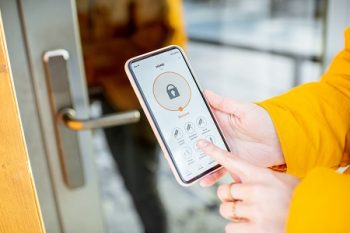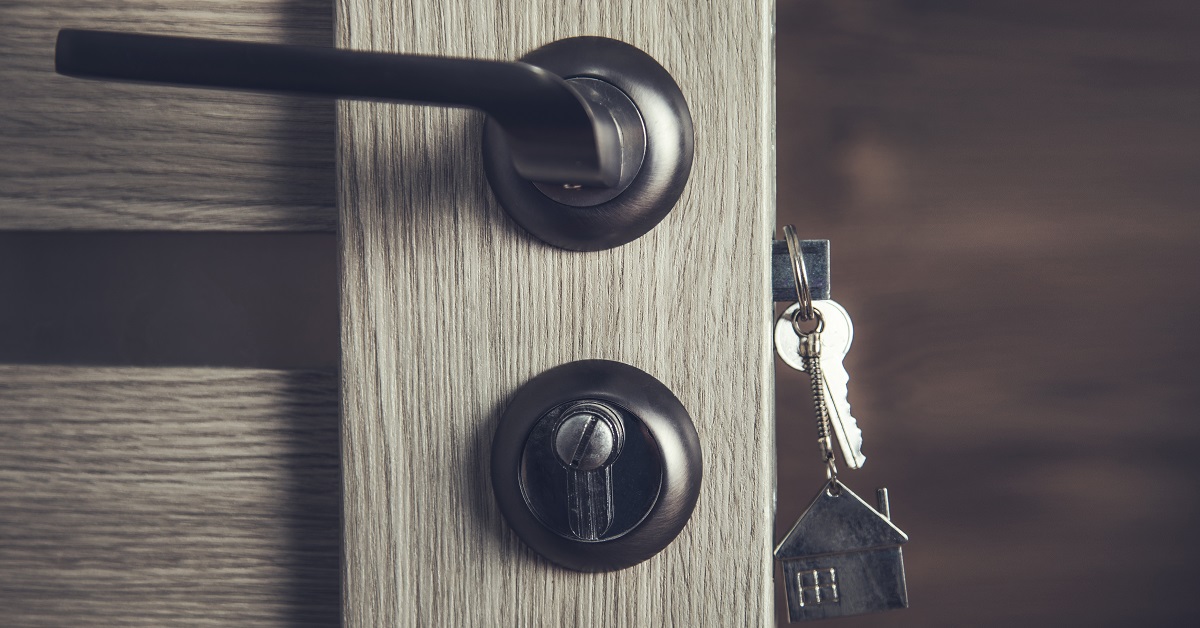Metro Lock and Safe Can Help Keep You Secure
The expert locksmiths at Metro Lock and Safe are here to help homeowners decipher these door lock contenders and their subcategories. We are experts of all things home security for the area. Our locksmiths will be able to install or replace any type lock, duplicate any key or craft a home security system that is just right for you. Contact us today!
Types of Door Locks

One of the most the fascinating facts about locks is just how long they have existed.
Since the earliest days by the deltas of ancient Mesopotamia and Egypt, humans have required the services of locksmiths to help secure their possessions and goods. Since then, lock types expanded across the globe and became as varied as the cultures they were found in.
Door locks in particular have seen a great deal of innovation, from from warded to pin tumbler locks, from drunk man’s to mortise locks, the development of this finicky yet essential security device has never been stalled by technology. Indeed, they rest at the forefront of any technological revolution.
While the refinement of modern door locks narrows the field of common types to pin tumbler mechanisms, there’s still a plethora of security products to befuddle oneself with: handle, deadbolt, single and double cylinder, lockable thumbturn, jimmy proof, and electronic door locks all comprise viable solutions for any external door.
With the advent of newer, more sophisticated and more expensive digital security systems, it can all become quite confusing as to which fixture is most secure for your home.
Read on and you, too, will be able to find the right protection for your home and stop unwanted thieves from entering.
Handle Locks
Perhaps the simplest style of door lock is the handle lock. Handle locks feature a key slot on the—wait for it—handle. They are also called a knob lock. However, their convenience also belies their simplicity. These are easiest door lock variation to break. To mitigate this weakness, handle locks often pair with deadbolts to provide double protection. The only door harder to break into than a door with one lock is a door with two. The deterred burglar will move on to easier jobs.
Deadbolt Locks
Speak of the deadbolt and it shall appear, this type of lock is perhaps the most straight forward while still being the most secure. Unlike other bolt locks, it requires a key to turn the bolt. No key, no open sesame. As mentioned, they pair with handles to provide that multiple mechanism show. However, they are not invulnerable. The adamant bandit can still jemmy the bolt with a crow bar and rip the door and lock out out of their jamb. This requires some battery, which will deter any larcenist with a preference for stealth.
Cylinder Locks
Cylinder locks are still deadbolts. The single or double cylinder refers to the number of key slots on either side of the lock cylinder. Single cylinders will generally have a thumbturn device on the protected side of the door whereas double cylinders discard the thumbturn for another keyed entry, enhancing the level of security on the inside of the property.
However, the latter often runs afoul of emergency services as there is no easy way to unlock the deadbolt from the inside. In most cases, they are rarely found on the primary entrance or fire exits of many buildings, commercial or residential. Cylinder locks display the basic trade-off between convenience and security.
Lockable Thumbturn Locks
The hybrid solution, lockable thumb turn deadbolts are largely similar to their single cylinder cousins, but with a nifty trick: there’s an additional key lock in the thumbturn.
This allows for a keyholder to use the regular single cylinder like a regular lock mechanism or lock the inside, barring ne’er-do-wells from entry. This halfway point between a knob lock and a deadbolt is a great solution for daycares or retirement homes. When set to turn, the lock can allow supervisors to maintain access to a room or area where they otherwise would have locked themselves out by accident.
Jimmy-Proof
As previously mentioned, not all locks are jemmy proof. Any motivated burglar can wedge themselves between the door and its jamb to pull, squeeze or rip the bolt out. Because deadbolts are usually put inside the actual door and jamb, that means there is not that much keeping the door in place.
To prevent even the possibility of such an intrepid thief for making their mark, some opt to place an additional jimmy-proof lock on the interior, protected surface. No one, however determined they might be to wedge their way into a jamb, will be able to unfasten this type of lock short of using a battering ram.
At that point, it’s not even thievery—it’s home invasion.
Anyways, the jimmy-proof lock uses its teeth to latch on to the wall frame, meaning the unwanted invader is going to have to not only knock down the door, but take a chunk of the wall as well. This lock will add another layer of protection, literally and figuratively.
Electronic Door Locks
When this blog post mentioned the technological revolution has stopped at the door, it was quite literal—if anything, the standard lock is now one of its biggest sales points—the entry way into the modern smart home. Whether keyless, Bluetooth or Wi-Fi smart lock, electronic locks of all types are slowly replacing the traditional lock.
Instead of keys, now homeowners can employ keypads, voice commands or their mobile phone to secure their residence. Depending on the model, they can also pair with Amazon Alexa, Apple iHome or Google Nest for extra security. Homeowners can rest assured that should any unwanted intruder make their way into the house, a robust security system will be able to record their every move, alert authorities and set off an alarm for residents.
The purpose of a keyless smart lock is to add a layer of electronic security and pick-resistant locks that would require digital equipment and aptitude to disarm. The secret to this lock’s sense of security is not the one in the deadbolt cylinder or handle itself, but in the layers of protection it provides.
And that’s the key: add enough hurdles and the common thief will retreat and move on.

